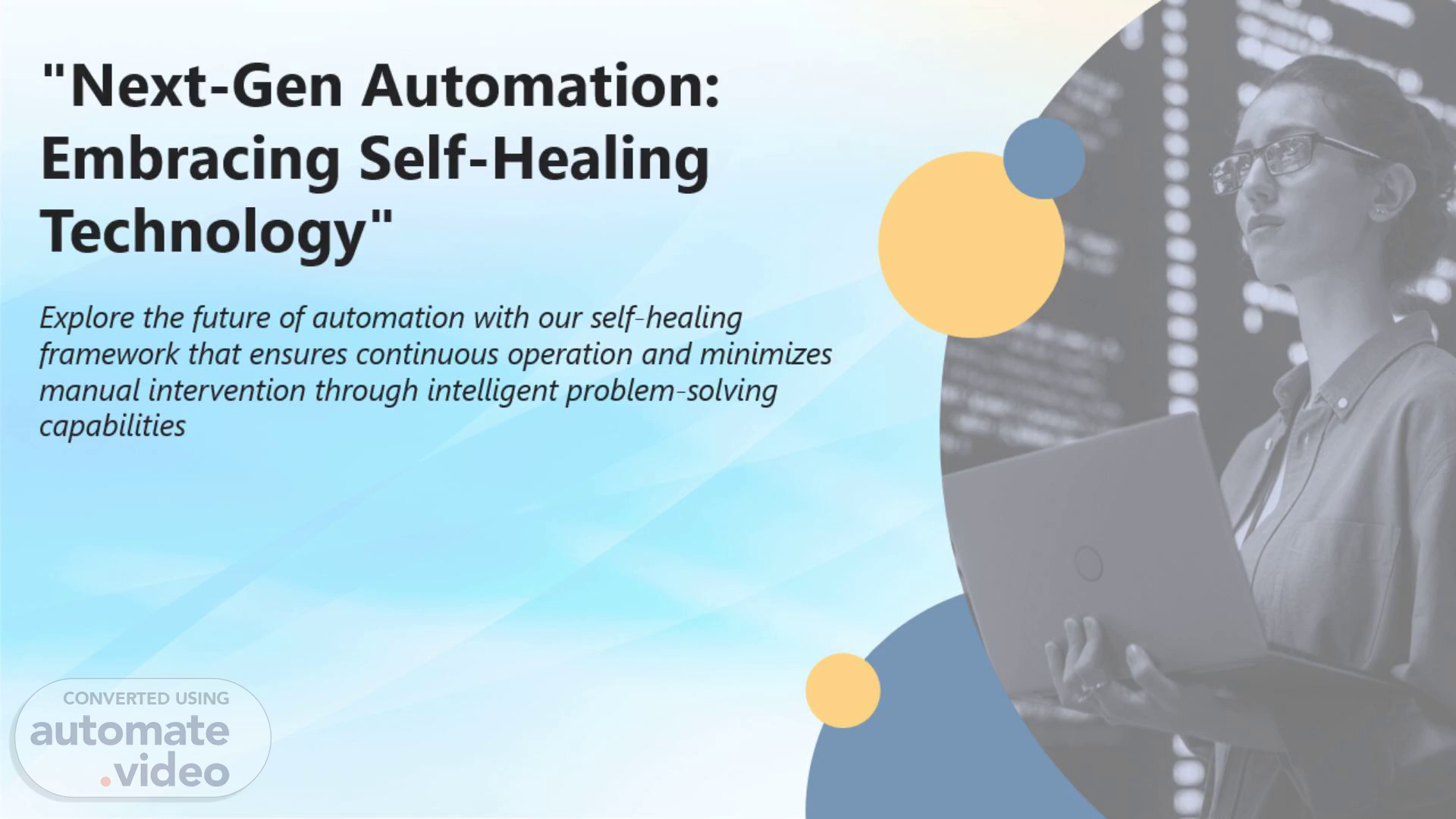Scene 1 (0s)
[Audio] Our self-healing framework marks a major breakthrough in automation technology by harnessing intelligent problem-solving capabilities. This enables us to maintain continuous operation while minimizing manual intervention, allowing our systems to adapt and respond to issues in real-time, thereby reducing downtime and enhancing overall efficiency. With this innovative technology, we are poised to transform the way we approach automation and push its boundaries further..
Scene 2 (29s)
[Audio] Dynamic web element detection has become increasingly challenging due to rapidly changing web applications with frequent UI updates. The complexity of dynamic content rendering, particularly in JavaScript-heavy single-page applications, further exacerbates this issue. Moreover, inconsistent element attributes and structures hinder accurate identification and mapping of web elements. Machine learning challenges arise from insufficient training data, difficulty in generalized learning across different applications, and complex mapping between visual and structural locators. These challenges lead to accuracy and prediction reliability issues, resulting in performance overhead. This includes additional computation time for locator healing, increased test execution time, memory and processing resource consumption, and complex algorithm implementation..
Scene 3 (1m 21s)
[Audio] To successfully integrate AI and machine learning into our self-healing framework, we face several challenges. Complex neural network training requires significant computational resources and expertise. Limited generalized AI models are available for element identification, making it difficult to develop accurate and reliable models. High costs are associated with sophisticated AI integration, and continuous model retraining is necessary to maintain performance. Ethical and practical considerations must be taken into account when implementing AI-driven solutions. This includes balancing automation efficiency against human oversight, preventing over-reliance on AI, ensuring reproducible test results, and addressing cost and resource constraints. Cross-browser and cross-platform compatibility must be ensured to guarantee seamless integration with various systems..
Scene 4 (2m 18s)
[Audio] Our self-healing framework uses a multi-strategy approach to detect and locate web elements, which includes the Multi-Strategy Locator Approach, Visual and Structural Element Mapping, and Machine Learning Model. This strategy enables quick adaptation to changes in the application's user interface and ensures seamless interaction with various browsers and testing tools like Selenium, Playwright, Cypress, and Puppeteer. Moreover, our advanced element detection capabilities employ natural language processing to provide human-readable descriptions, resulting in more accurate and efficient testing. With real-time adaptation through continuous learning, synthetic data generation, transfer learning from pre-trained models, and performance optimization through efficient algorithms and parallel processing, we minimize manual intervention and guarantee continuous operation..
Scene 5 (3m 10s)
[Audio] Our team consists of experienced professionals who have been instrumental in developing our self-healing framework. Led by Vidhiyashari, our Test Lead, we have assembled a strong team of senior test engineers, including Victor, Harivarathan, and Karthic. With their expertise, we have designed a system that ensures continuous operation and minimizes manual intervention through intelligent problem-solving capabilities. Our team has worked tirelessly to ensure that our framework is robust and reliable, and we are confident that it will revolutionize the way we approach automation..
